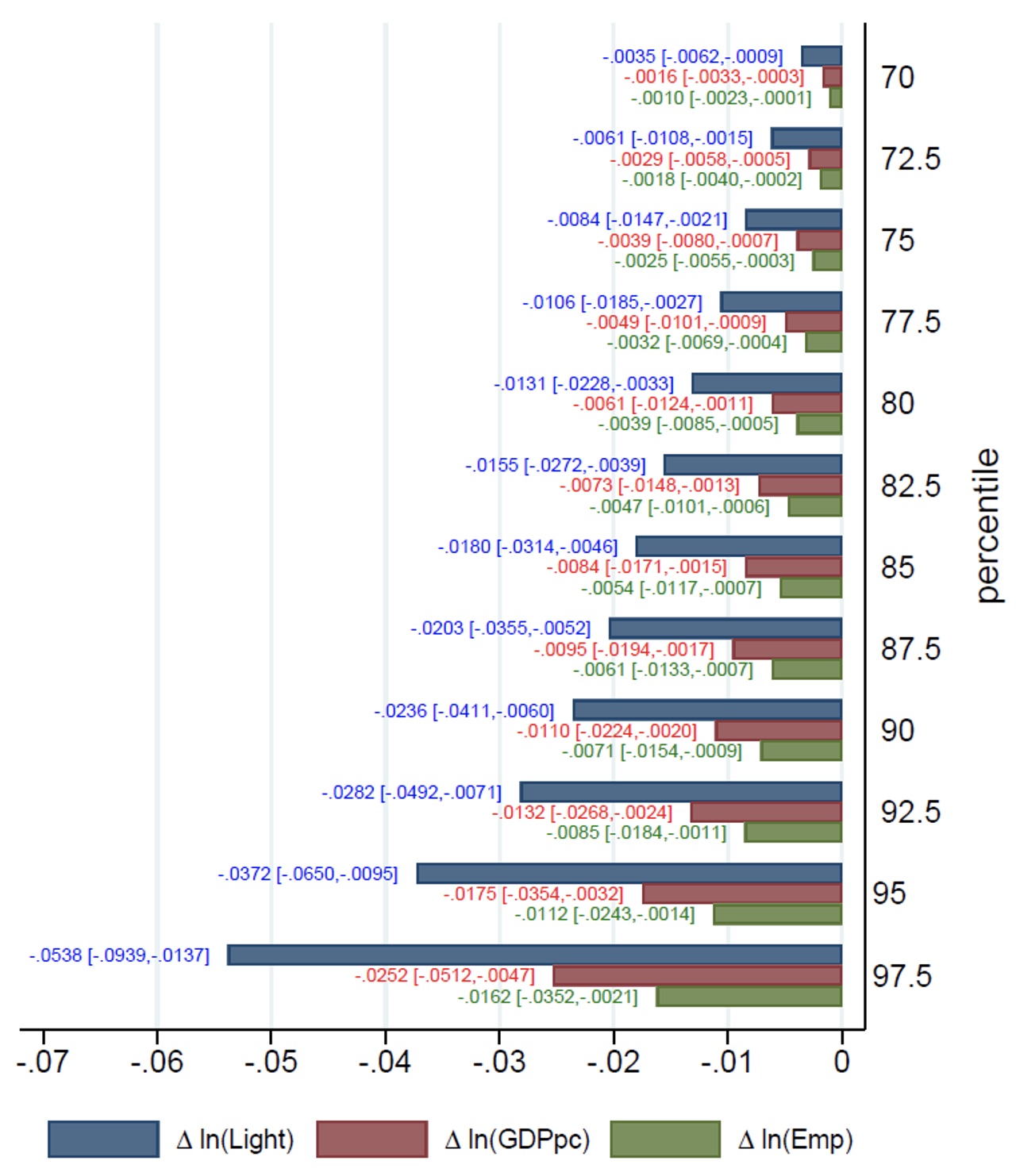Understanding The Economic Ramifications Of A U.S.-China Tariff Rollback

Table of Contents
Impact on U.S. Consumers
A U.S.-China tariff rollback would significantly impact American consumers, primarily through changes in prices and inflationary pressures.
Reduced Prices
A rollback would likely lead to lower prices for numerous goods imported from China. This translates to increased consumer purchasing power.
- Decreased costs for electronics, apparel, and other consumer staples: Consumers could see noticeable savings on everyday items, from smartphones and clothing to furniture and home goods. This is especially important for lower-income households where these expenses represent a larger portion of their budget. The reduction in import costs could potentially stimulate demand in these sectors.
- Increased consumer spending and potential economic stimulus: Increased disposable income due to lower prices could lead to a rise in consumer spending, boosting economic growth. This increased spending can have a ripple effect throughout the economy, supporting job creation and business investment. This is a key factor economists consider when analyzing the impact of tariff changes.
- Potential for increased competition and greater choice for consumers: Lower prices could encourage greater competition among retailers, leading to a wider variety of products at more affordable price points. This can benefit consumers by offering more choices and potentially better quality goods.
Inflationary Pressures
While price reductions are a likely outcome, the impact on inflation is complex and depends on several factors.
- Analysis of potential inflationary pressures from reduced import costs: While lower import costs generally reduce inflation, the speed and magnitude of this effect are unpredictable. Supply chain disruptions, transportation costs, and corporate pricing strategies all play a role.
- Discussion on the role of corporate profits and consumer demand: Companies may not fully pass on the savings from tariff reductions to consumers, potentially retaining some as increased profit margins. Similarly, increased consumer demand could lead to upward pressure on prices despite lower import costs. The interplay of these factors will significantly influence the overall inflationary impact.
- Examination of the potential impact on the Federal Reserve's monetary policy: The Federal Reserve (the Fed) closely monitors inflation and adjusts monetary policy accordingly. A significant reduction in inflation due to a tariff rollback could influence the Fed's decisions regarding interest rates and other monetary tools, impacting borrowing costs and overall economic activity.
Effects on U.S. Businesses
The impact of a U.S.-China tariff rollback on U.S. businesses is also multifaceted, creating winners and losers.
Increased Profitability for Importers
Companies that import goods from China would experience a direct boost to their profitability.
- Enhanced competitiveness for U.S. businesses relying on Chinese imports: Reduced tariff costs would make these businesses more competitive, allowing them to lower prices or increase profit margins. This could lead to significant gains in market share, especially against competitors who source goods elsewhere.
- Potential for increased investment and job creation in import-related sectors: With higher profitability, these companies might reinvest their savings in expansion, potentially creating new jobs in areas like logistics, warehousing, and retail. This is a positive economic multiplier effect.
- Analysis of the potential for increased market share for U.S. importers: Reduced costs could allow these companies to undercut competitors, potentially capturing a larger share of the domestic market.
Challenges for Domestic Producers
Conversely, domestic U.S. producers competing directly with cheaper Chinese imports could face significant challenges.
- Examination of the potential for job losses in certain U.S. industries: Reduced import costs could make Chinese goods more attractive to consumers, potentially leading to decreased demand for domestically produced alternatives. This could result in job losses in certain manufacturing sectors.
- Discussion of the need for government support for affected domestic industries: The government may need to consider providing support, such as retraining programs or subsidies, to help affected industries adapt to the increased competition. Such measures are crucial to mitigating the negative consequences for workers and businesses.
- Analysis of the potential for increased competition and innovation in affected sectors: The increased competition could incentivize innovation and efficiency improvements among domestic producers, leading to the development of new products and technologies. This could ultimately benefit the economy in the long run.
Global Trade Implications
A U.S.-China tariff rollback would have far-reaching consequences for global trade and geopolitical relations.
Restructuring Global Supply Chains
The rollback could significantly alter global supply chains.
- Examination of the potential impact on global trade patterns: The shift could lead to a resurgence of manufacturing and trade with China, altering established trade routes and partnerships. Other countries currently benefiting from the redirection of supply chains away from China could experience a downturn in their economies.
- Discussion of the potential for increased trade between the U.S. and China: The removal of tariffs could stimulate bilateral trade between the two countries, potentially resulting in a substantial increase in the volume of goods exchanged.
- Analysis of the impact on other countries involved in global supply chains: Countries that have benefited from the shift in manufacturing away from China might see a negative impact on their economies as production shifts back to China. This is a key consideration in assessing the global ramifications of a tariff rollback.
Impact on Geopolitical Relations
The policy shift could also have major implications for the relationship between the U.S. and China.
- Discussion on the potential for improved U.S.-China relations: A tariff rollback could be seen as a gesture of de-escalation, potentially leading to improved diplomatic relations and increased cooperation on other global issues.
- Analysis of the potential impact on global political stability: Easing trade tensions between these two economic superpowers could have a positive impact on global political stability, reducing the risk of further economic conflicts.
- Examination of the potential for increased cooperation on other global issues: Improved relations could pave the way for increased cooperation on issues such as climate change, pandemics, and global security.
Conclusion
A U.S.-China tariff rollback would have wide-ranging economic consequences, impacting consumers, businesses, and the global trade system. While lower prices for consumers and increased profitability for importers are likely, domestic producers might face challenges, and global supply chains may undergo significant restructuring. Understanding these complex implications is crucial for policymakers, businesses, and individuals alike. Further research into the potential impacts of a U.S.-China tariff rollback is necessary to fully assess the economic consequences and prepare for the potential shifts in the global economy. Staying informed about the developments regarding U.S.-China tariff rollbacks is essential for navigating this evolving economic landscape.

Featured Posts
-
 Natsionalni Savet Roma I Optuzhbe Za Govor Mrzhnje Slucha Marinike Tepi
May 13, 2025
Natsionalni Savet Roma I Optuzhbe Za Govor Mrzhnje Slucha Marinike Tepi
May 13, 2025 -
 Atalanta Vs Venezia Hasil Imbang Tanpa Gol Performa Jay Idzes
May 13, 2025
Atalanta Vs Venezia Hasil Imbang Tanpa Gol Performa Jay Idzes
May 13, 2025 -
 Scarlett Johansson Addresses Potential Black Widow Mcu Return
May 13, 2025
Scarlett Johansson Addresses Potential Black Widow Mcu Return
May 13, 2025 -
 Leonardo Di Caprio Faces Intense Backlash A Look At The Controversy
May 13, 2025
Leonardo Di Caprio Faces Intense Backlash A Look At The Controversy
May 13, 2025 -
 Community Mourns 15 Year Old After School Stabbing
May 13, 2025
Community Mourns 15 Year Old After School Stabbing
May 13, 2025
Latest Posts
-
 Scotty Mc Creerys Sons Adorable George Strait Tribute Watch Now
May 14, 2025
Scotty Mc Creerys Sons Adorable George Strait Tribute Watch Now
May 14, 2025 -
 Scotty Mc Creerys Son Honors George Strait In Touching Video Watch Now
May 14, 2025
Scotty Mc Creerys Son Honors George Strait In Touching Video Watch Now
May 14, 2025 -
 Sons Sweet Tribute Watch Scotty Mc Creerys George Strait Moment
May 14, 2025
Sons Sweet Tribute Watch Scotty Mc Creerys George Strait Moment
May 14, 2025 -
 Adorable Video Scotty Mc Creerys Son Pays Tribute To George Strait
May 14, 2025
Adorable Video Scotty Mc Creerys Son Pays Tribute To George Strait
May 14, 2025 -
 Scotty Mc Creerys Sons Adorable George Strait Tribute A Must Watch Video
May 14, 2025
Scotty Mc Creerys Sons Adorable George Strait Tribute A Must Watch Video
May 14, 2025
